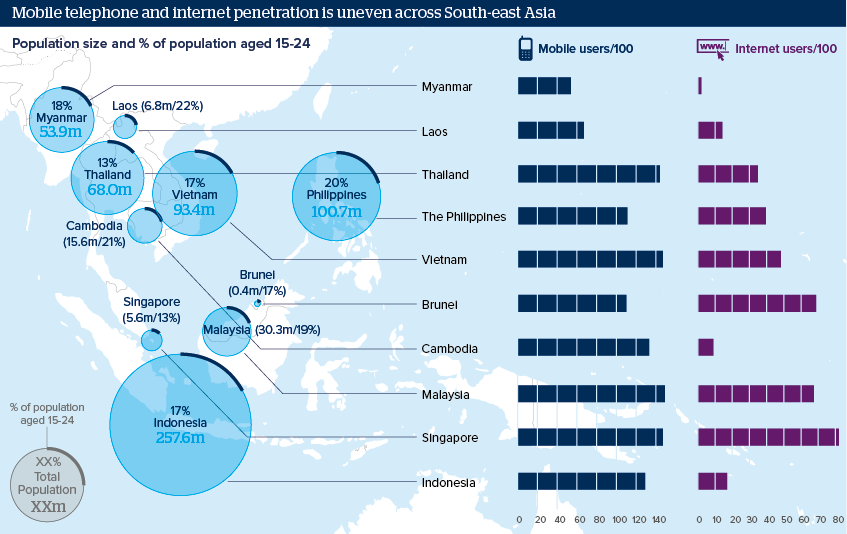ASEAN integration will drive e-systems demand
With a young population and integrating economies, e-government and e-commerce systems demand will grow in ASEAN

Source: World Bank; International Telecommunication Union; UN; Eurostat; Secretariat of the Pacific Community; US Census Bureau; Oxford Analytica
Outlook
The state of economic and technological development between ASEAN countries is uneven, evidenced by imbalances in internet and mobile telephone usage.
As ASEAN economies integrate and grow -- the ASEAN Economic Community (AEC) free trade area is now operating -- and as South-east Asia's middle class expands, demand for e-commerce and e-government services will increase. A 2015 study for the ASEAN Business Forum forecast electronic retailing demand in ASEAN's six largest economies would grow 25% each year to 2017 (it produced an estimated 7 billion dollars in sales in these economies in 2013) while all ASEAN countries have agreed the eASEAN Framework Agreement for electronic cooperation, including expanding e-commerce and e-government capacity.
Impacts
- Demographics will drive ASEAN e-commerce and e-government demand: the region's young, technologically astute population is large.
- Expanding e-commerce requires enhanced logistics and delivery systems, online security and legal and regulatory protections, and investment.
- Until then, the more technologically developed ASEAN economies, such as Singapore, will have an e-commerce advantage over ASEAN peers.
- As governments expand their electronic footprints, the more authoritarian will face greater pressure for transparency, and may pull back.
See also
- Terrorism could hit social media firms in ASEAN - Jul 17, 2017
- South-east Asia cybercrime threat likely to grow - May 15, 2017
- Philippines infrastructure needs more private money - Apr 10, 2017
- Thai-Vietnamese censorship could hinge on Trump - Mar 30, 2017
- South-east Asia adopts divergent views on social media - Oct 31, 2016
- Uneven e-government will hinder South-east Asia trade - Sep 24, 2015
- More graphic analysis